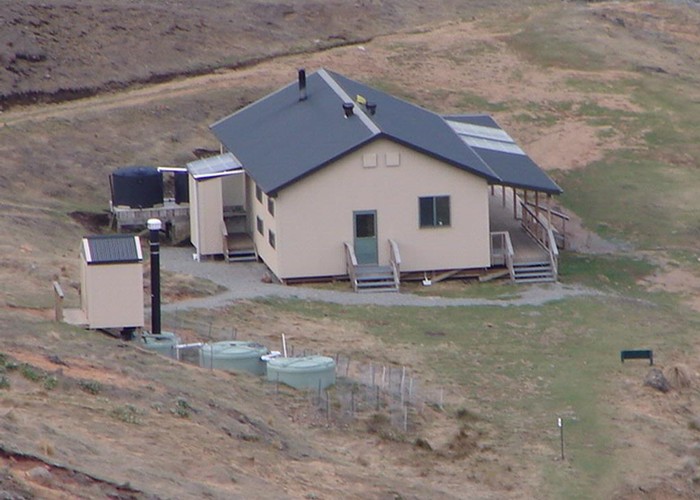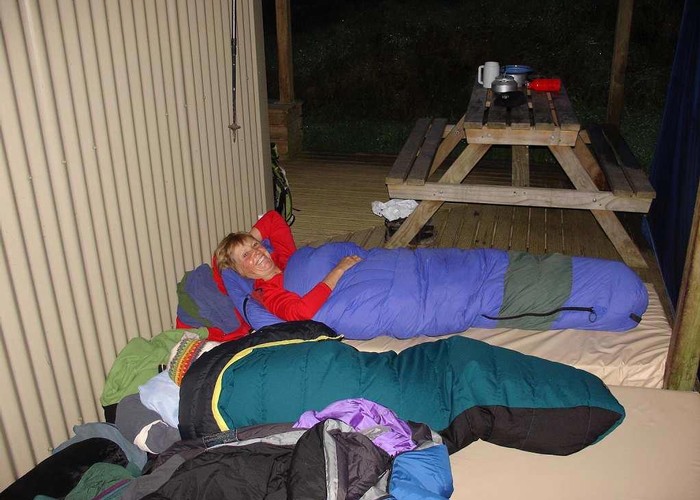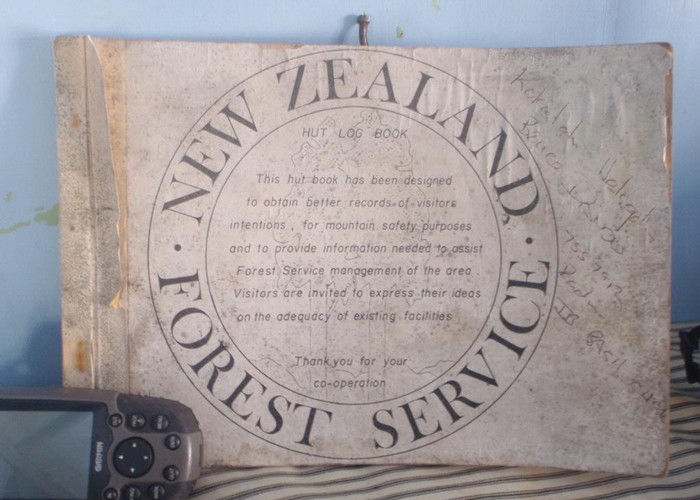Where shall I go?
Choose a hut nearby, not too far from the road. Here are some suggestions to get you started.
There are not a lot of huts around Auckland and they are in high demand, so you will need to book them. Peach Cove Hut, Pinnacles Hut (Coromandel Peninsula), Waitawheta Hut.
The Orongorongo Valley near Wellington has a number of huts available. These need to be booked, and offer a lot of home comforts. Try these: Boar Inn, Raukawa Lodge, Oaks Hut, Jans Hut, Turere Lodge, Haurangi Hut.
Huts near Christchurch include Sign of the Packhorse on Banks Peninsula or the following huts across the plains: Pinchgut Hut, Woolshed Creek Hut, Bealey Hut, Hawdon Hut.

Huts near Dunedin include Jubilee Hut, Leaning Lodge, Big Hut.
What should I expect?
A typical hut will have cold water from a tank, a wood burner, a long drop toilet outside, a cooking area with a table and bench seats, and bunks or sleeping platforms with mattresses. A hut typically won't have food available for purchase, rubbish facilities, hot water, showers, lighting, or electricity.
How do I book or pay?
Many New Zealand tramping huts are free, while others are paid for by purchasing hut tickets from DOC or from many outdoor recreation stores. More popular huts need to be booked in advance. This can be done online, here: https://booking.doc.govt.nz/. A few of the huts mentioned above are owned by clubs, so you will need to pay the club. In general, you can't pay for the hut at the hut.
What do I need to take?
For most huts, you need to take everything you will need for the night. This includes food, a plastic water bottle, a cooker and lighter, a pot, a bowl, a spoon, a sharp knife, a torch, a sleeping bag, earplugs, toilet paper, toothbrush, small bottle of hand sanitiser, small first aid kit. Things you don't need to take are pillows, sheets, and mattresses. If you don't have a cooker, just take food you can eat cold. Do take layers of warm clothes. Your hut may not be as warm as you would like.
What kind of food should I take?
Take something that cooks quickly in one pot. Take food that doesn't contain much water as water is hard work to carry. Quick cooking pasta or couscous could be useful. Make sure you have food you can eat without cooking, just in case. For breakfast, oats or muesli works well. Dried fruit soaked overnight will reconstitute well. Keep things simple by packing muesli bars.
What if the hut is full?
Unless it is a booked hut, nobody has the right to turn you away from a hut, but you may be sleeping on the floor or the verandah! If this concerns you, then you should choose a hut you can book, avoid weekends, arrive early, or take an inflatable hiking mattress.

Can I take kids?
Absolutely, and kids are often very cheap or free in huts. It pays to think about activities that can keep them busy in the hut. Take cards or similar.
What is the hut etiquette?
Huts are often small, with a lot of pressure on limited space for cooking.

- Leave your boots outside.
- Keep things tidy and allow room for others.
- Fill in the hut book.
- Don't touch other people's things.
- Chat and be friendly.
- Don't act like you own the place because you have a big group or you got there first.
- Keep quiet when people are trying to sleep. That includes mornings: it's not your decision when everybody should get up.
- Don't leave food scattered around as it encourages pests.
- Give the hut a sweep and wipe when you leave.
- Don't put rubbish in the fire or the toilet.
- Restock wood supplies, but don't cut living trees.
- Carry all your rubbish out with you.
OK!
That's everything you need to know about huts. One thing to note: if you haven't been tramping before, you are best to start off with day walks, the Great Walks, join a club, or to go with an experienced tramper.

